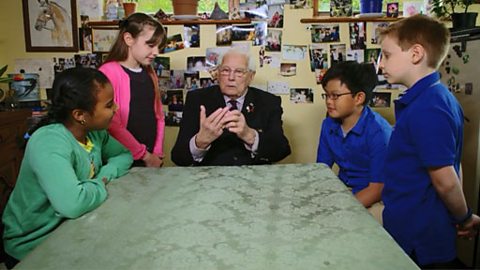We re-join filmmakers Maya a Maisie in the edit studio where they are nearing the end of the post production on their film about World War Two veteran, Fergus Anckorn.
They have now moved on to thinking about how they can add a voiceover to enhance their project and make it easier to understand. ┤¾¤¾┤½├¢ producer, Steve Humphries, explains how voiceovers can be used to simplify information or make the action on screen more dramatic.
The girls find part of their interview where Fergus has given a long, complicated answer. They then write a script that simplifies the information, before recording it and adding it to the project.
Two film clips then follow that demonstrate how good voiceover has been used by school children across the country, as part of the ┤¾¤¾┤½├¢'s Make Film - Greatest Generation project.
Teacher Notes
This clip could be used as an introduction to voiceover techniques and writing to pictures.
Students could choose some archive footage and write commentary for it. As a class you could discuss beforehand what factors need to considered, for example timing, tone and language.
Curriculum Notes
This clip will be relevant for teaching Media Studies and History at Key Stage 2 in England, Wales and Northern Ireland and at Second Level in Scotland.
More from the series Filming our Greatest Generation
Finding the right interviewee. video
A group of children look at how to find interesting characters to interview for an World War Two history project.

Using archive footage or photographs. video
A group of children look at ways of illustrating their story using archive footage and photographs for a World War Two history project.

Good interview questions. video
A group of children explore the best ways to prepare interview questions for a World War Two history film project.

Choosing a good interview location. video
Under the guidance of ┤¾¤¾┤½├¢ producer, Steve Humphries, the children demonstrate why a good location is essential when interviewing for film.

Setting up film shots. video
A group of children look at different ways to set up and frame shots when filming an interview for a World War Two history project.

Recording sound for an interview. video
A group of children look at how to set up clear sound recording when filming an interview for a World War Two history project.

Interviewing techniques. video
A group of children demonstrate key techniques a good interviewer can employ while filming their interview for a World War Two history project.

How to edit your interview. video
A group of children look at editing techniques for a World War Two history project.

Using music in a film project. video
A group of children look at how adding music can enhance their World War Two history project.
